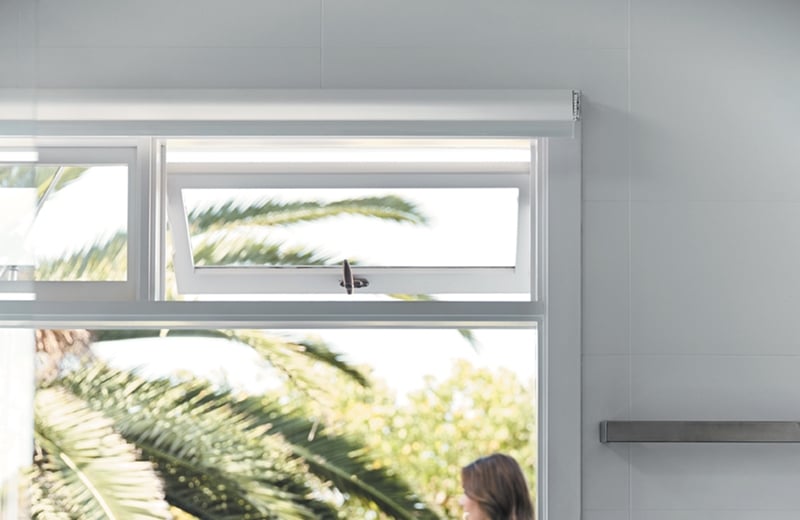
UNDERSTANDING THE NCC 2022
Key Amendments
Key amendments associated with windows and doors include the following:
Effective 1 May 2023*
- Installation of windows and doors
- Glazing of windows and doors
Effective 1 October 2023*
- Livable Housing Australia silver level for accessibility including:
- Clear openings for doorways
- At least one step-free threshold to enter the home
- Increased energy efficiency requirements
- Condensation management requirements
The Livable Housing Australia provisions are based in principle on the Livable Housing Design Guidelines (silver level). As part of the ABCB’s conversion of the guideline to the NCC provision, minor adjustments have been made to ensure requirements are prescriptive and consistent with other sections of the NCC.
* There are state based variations to the adoption dates, visit the ABCB for the latest transition arrangements.
UNDERSTANDING THE NCC 2022
INSTALLATION OF WINDOWS AND DOORS
Part 8.2 and clause 5.6.6 – Housing Provisions
Additional detail regarding window and door installation.
Housing provisions has updated advice regarding the installation of windows and doors.
Window and Door Installation - All Construction Methods
- Structural building loads must not be transferred to the window or door assembly.
- A minimum 10mm gap must be provided between the top of the window or door assembly and any load bearing framing / wall element. The minimum gap of 15mm may be increased where necessary to allow for frame settlement over wide openings.
- Packing, if provided between window or door assembly and the frame must be located along each side and bottom of the assembly, must be fixed to stay, ensure that the sides and the bottom remain straight and should be clear of any flashing material.
Timber Window and Door Installation - Double Brick Construction
- In addition to the above, timber doors and windows installed into double brick construction (cavity masonry) must be fixed with 300mm long x 0.8mm kinked galvanised steel straps fixed to the back of the frames and set into courses not less than 150mm and not more than 400mm intervals.
UNDERSTANDING THE NCC 2022
GLAZING OF WINDOWS AND DOORS
Part 8.4.2 and part 8.4.6 – Housing Provisions Changes to glazing requirements.
Housing provisions has updated advice regarding the glazing requirements for toughened glass.
4mm Toughened Glass Requirements – Windows and Doors
- Toughened glass at 4mm thickness is only allowed to a maximum area of 2.0 m2. Currently AS1288 allows for 4mm toughened glass to a maximum area of 2.2 m2. The recommendation from AGWA is that the new Housing Provisions overrule this standard.
Toughened Glass Requirements - Kitchen Windows
- Kitchen windows are now required to have toughened glass. While there is no definition of what constitutes a kitchen window, our recommendation is that this includes any window within the footprint of a kitchen has safety glass (including within pantries).

UNDERSTANDING THE NCC 2022
Clear Openings For Doorways
Clause 2.1 and 3.1 – Livable Housing Design
Mandated clear opening width for entrance doors and internal doors.
A minimum clear opening of 820mm wide is required for at least one external doorway (designated entrance door which is used in conjunction with the step-free access path), as well as internal doorways on ground floor or split level ground floors to designated room types. Therefore, when a hinged door is opened to its maximum, there must be a clearance of at least 820mm wide, excluding the door handle.
As a result, 820mm wide doors will no longer be suitable for use in these instances. An 870mm wide door will achieve the minimum clear opening for internal applications and a 920mm wide door will achieve the minimum clear opening for external applications, subject to the doors stops and hinges used.
Sliding doors, bi-fold doors and other types of doors can be considered as an entrance door to the dwelling provided that the door connects to the continuous step free access path to the dwelling. Double doors, bi-fold doors, stacking doors, multiple sliding door panels and other types of hinged doors can use a smaller leaf provided that the overall clear opening when fully opened is not less than 820mm.
UNDERSTANDING THE NCC 2022
Step-free Threshold
Clause 1.1, 1.2 and 2.2 – Livable Housing Design
Mandated sill specification for entrance doors.
At least one step-free threshold is required into the home and a suitable pathway into the home from the boundary of the property. This can be achieved in different ways and several building elements are implicated.
Step-Free Path Requirements
There are two options to achieve the step-free path requirements:
- Option 1 - Entry Access: A step-free path of travel from the boundary to the entrance door, which can incorporate either an access path or ramps including step ramps. Both must satisfy minimum width gradient requirements. A side door can be considered an entrance door, provided it has continuous step-free access.
- Option 2 - Car Parking Access: The path of travel may be provided via an associated car parking space (if the car parking space is for exclusive use of the dwelling occupants). This may be a connected or free-standing garage with the required minimum dimensions.
Step-Free Threshold Requirements
Once a step-free path to the home is achieved there is a specific threshold requirement for the nominated entrance door that connects the step-free path to the home.
The threshold of an entrance door that is subject to Clause 2.1 must:
a) be level; or
b) have a sill height not more than 5 mm if the lip is rounded or bevelled; or
c) have a ramped threshold that:
i. does not extend beyond the depth of the door jamb; and
ii. has a gradient not steeper than 1:8; and
iii. is at least as wide as the minimum clear opening width of the entrance door; and
iv. does not intrude into the minimum dimensions of a landing area that is required by Clause 2.3; or
d) where the requirements of (a), (b) or (c) cannot meet the weatherproofing requirements of the NCC, for external entrance doors containing a raised door or sill:
i. have no lip or upstand greater than 15 mm within the sill profile; and
ii. have no more than 5 mm height difference between the edge of the top surface of the sill and the adjoining finished surface.

UNDERSTANDING THE NCC 2022
ENERGY EFFICIENCY
In February 2019, the COAG Energy Council (state and territory energy ministers) met and agreed on a forward program for increases to the NCC energy efficiency provisions over the next decade and beyond.
For Class 1 and Class 2 buildings, the agreed trajectory recommends a significant increase in stringency for NCC 2022 and NCC 2025 and further increases every three years until a target of ‘zero energy (and carbon) ready buildings’ is achieved.
For Class 1 buildings the changes pertaining to energy efficiency include:
- A seven star rating requirement for the building fabric.
- A significant re-write of the DTS provisions, set at a seven star equivalent.
- Introducing new requirements for thermal bridging of steel framing.
- New whole of house provisions, including other elements of the home such as solar power, lighting and heating / cooling appliances.
Work is believed to be underway to upgrade energy rating tools that currently assess the building fabric only (e.g. Accurate, First Rate5, BERS Pro and HERO) to reflect these updates.

UNDERSTANDING THE NCC 2022
CONDENSATION MANAGEMENT
With the energy-efficiency provisions in the NCC ramping up and buildings being more tightly sealed with less ability to breathe, condensation has become a real concern.
NCC 2019 introduced requirements for vapour permeable membranes in certain climates, mandatory ducting and/or roof space ventilation and a new condensation risk management Verification Method.
For NCC 2022 the more substantive measures include:
- Changes to wall sarking requirements to more vapour permeable type equivalent to Class 3 or Class 4 membrane.
- Ventilation roof spaces – including providing air spaces for roofs, changes to roof sarking installation and roof sarking vapour permeability requirements, and additional roof space ventilation via installation of whirlybirds, ridge or eave vents or similar.
- Exhaust systems changes including:
- Minimum flow rate for exhaust fans.
- Mandatory exhaust and ducting for rangehoods.
- No recirculating rangehoods permitted.
- Bathrooms not naturally ventilated have exhausts with 10-minute run-off timer.
Important Links
In addition to the above items there are many other elements subject to proposed amendments. We strongly recommend researching these elements further, please see the links provided below to assist in your research.
- National Construction Code 2022
- NCC 2022 state and territory adoption dates
- NCC 2022 overview of key changes articles
The information contained above is general in nature, and before relying on the material in any important matters, users should carefully evaluate its accuracy, currency, completeness and relevance for their purpose. This content is not intended, and should not be relied upon as, the ultimate and complete source of information, a substitute for consulting the relevant legislation or for obtaining appropriate professional advice relevant to your particular circumstances. While every effort has been made to ensure the information is accurate, Trend Windows and Doors does not accept responsibility or liability for any loss, damage, cost or expense incurred as a result of the use of, or reliance on, information contained on this page or any links within it. No responsibility is accepted by Trend Windows and Doors for any mistakes, errors or omissions in the content above.
Explore our building and renovating guides
Your Quote
item(s)Attach Documents(Plans, Reports, Photos)
Installation
Product Selection Summary
No products in the Quote Drawer.
Your Quote
item(s)Quote submitted
Thank you for your quote request.
We look forward to helping you with your project.
You will receive an email confirming your enquiry number.
A Trend team member will contact you within two business days to discuss your project.